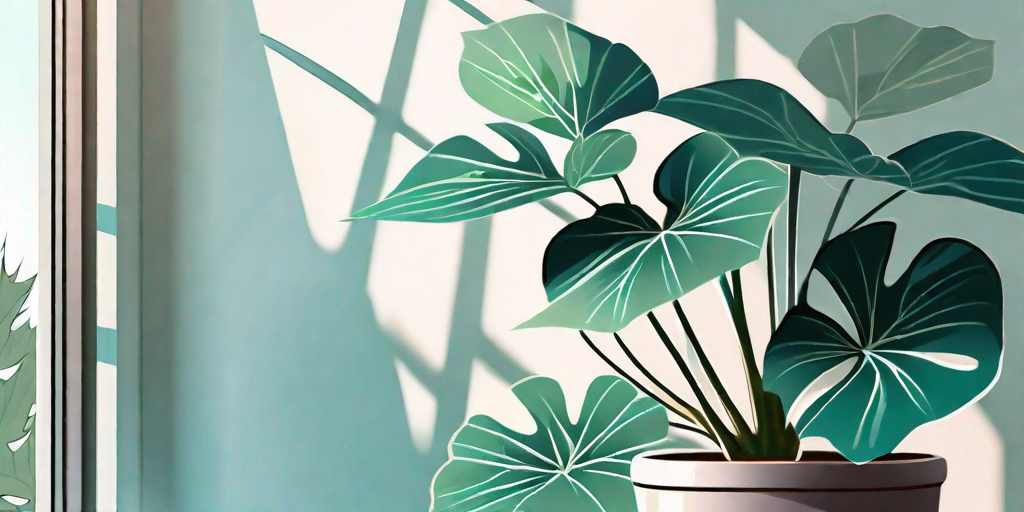
Welcome, green-thumbed enthusiasts and plant novices alike! Today, we're going to explore the wonderful world of Fatsia Japonica, a plant that's as fun to say as it is to grow. This leafy green beauty hails from Japan, but with a little love and care, it can flourish in your living room, too. So, let's dive in, shall we?
What is Fatsia Japonica?
First things first, let's get to know our plant of the hour. Fatsia Japonica, also known as the Japanese Aralia or the Paperplant, is a species of flowering plant in the family Araliaceae. It's native to Japan, South Korea, and Taiwan. But don't let its exotic origins fool you; this plant is a hardy fellow that can adapt to a variety of environments.
The Fatsia Japonica is a perennial evergreen shrub that can grow up to 16 feet in height. Its leaves are large, glossy, and palmate, meaning they resemble an open hand with fingers spread. The plant blooms in late autumn, producing clusters of small, creamy-white flowers, followed by black fruits. But enough about its Tinder profile, let's get into the nitty-gritty of indoor care.
How to Care for Fatsia Japonica Indoors
Lighting and Positioning
Like a shy debutante, Fatsia Japonica prefers indirect light. Too much direct sunlight can cause leaf scorch, which is as unpleasant as it sounds. So, position your plant near a north-facing window, or in a spot that gets filtered light. If you notice the leaves turning yellow, it might be a sign that your plant is getting too much light. On the other hand, if the leaves start to droop, it might be craving more light. Yes, plants can be just as fickle as humans.
As for positioning, Fatsia Japonica is not a fan of drafts. So, keep it away from open windows, air conditioning vents, and other sources of cold air. It's also a good idea to rotate your plant every few weeks to ensure even growth. After all, nobody likes to be left in the shadows.
Watering and Feeding
When it comes to watering, Fatsia Japonica likes to keep things moist but not too wet. Overwatering can lead to root rot, which is a surefire way to kill your plant. So, how do you strike the right balance? Water your plant when the top inch of soil feels dry to the touch. In the winter, you can cut back on watering, as the plant's growth slows down.
As for feeding, Fatsia Japonica is not a picky eater. A general-purpose houseplant fertilizer applied according to the package instructions should do the trick. Feed your plant once a month during the growing season (spring and summer) and once every two months during the rest of the year.
Pruning and Repotting
Pruning is not strictly necessary for Fatsia Japonica, but it can help maintain a neat appearance. You can prune your plant in early spring, removing any dead or damaged leaves. Just remember to use clean, sharp scissors to avoid spreading disease.
Repotting should be done every 2-3 years, or when the plant outgrows its pot. Choose a pot that's one size larger than the current one and make sure it has good drainage. When repotting, be gentle with the roots and use a well-draining potting mix.
Common Problems and Solutions
Yellow Leaves
Yellow leaves can be a sign of overwatering or too much light. If the leaves are yellow and wilted, it's probably a watering issue. If they're yellow and scorched, it's likely due to too much direct sunlight. Adjust your care routine accordingly, and your plant should bounce back in no time.
Leaf Drop
Leaf drop can be caused by a variety of factors, including overwatering, under watering, cold drafts, or a sudden change in temperature. Check your plant's environment and care routine to identify the culprit. Remember, Fatsia Japonica likes stability, so try to avoid drastic changes.
FAQs
- Is Fatsia Japonica toxic to pets?
Yes, Fatsia Japonica is toxic to cats and dogs. If ingested, it can cause vomiting, diarrhea, and other symptoms. So, keep it out of reach of your furry friends.
- Can I grow Fatsia Japonica from cuttings?
Yes, you can propagate Fatsia Japonica from stem cuttings. Just make sure to use a rooting hormone and provide the cutting with plenty of humidity.
- Why are the leaves on my Fatsia Japonica turning black?
Black leaves can be a sign of a fungal disease. If you notice black spots on the leaves, isolate your plant to prevent the disease from spreading and treat it with a fungicide.
And there you have it, folks! Everything you need to know to care for Fatsia Japonica as an indoor plant. Remember, a happy plant is a healthy plant, so give your green friend plenty of love and attention. Happy planting!















